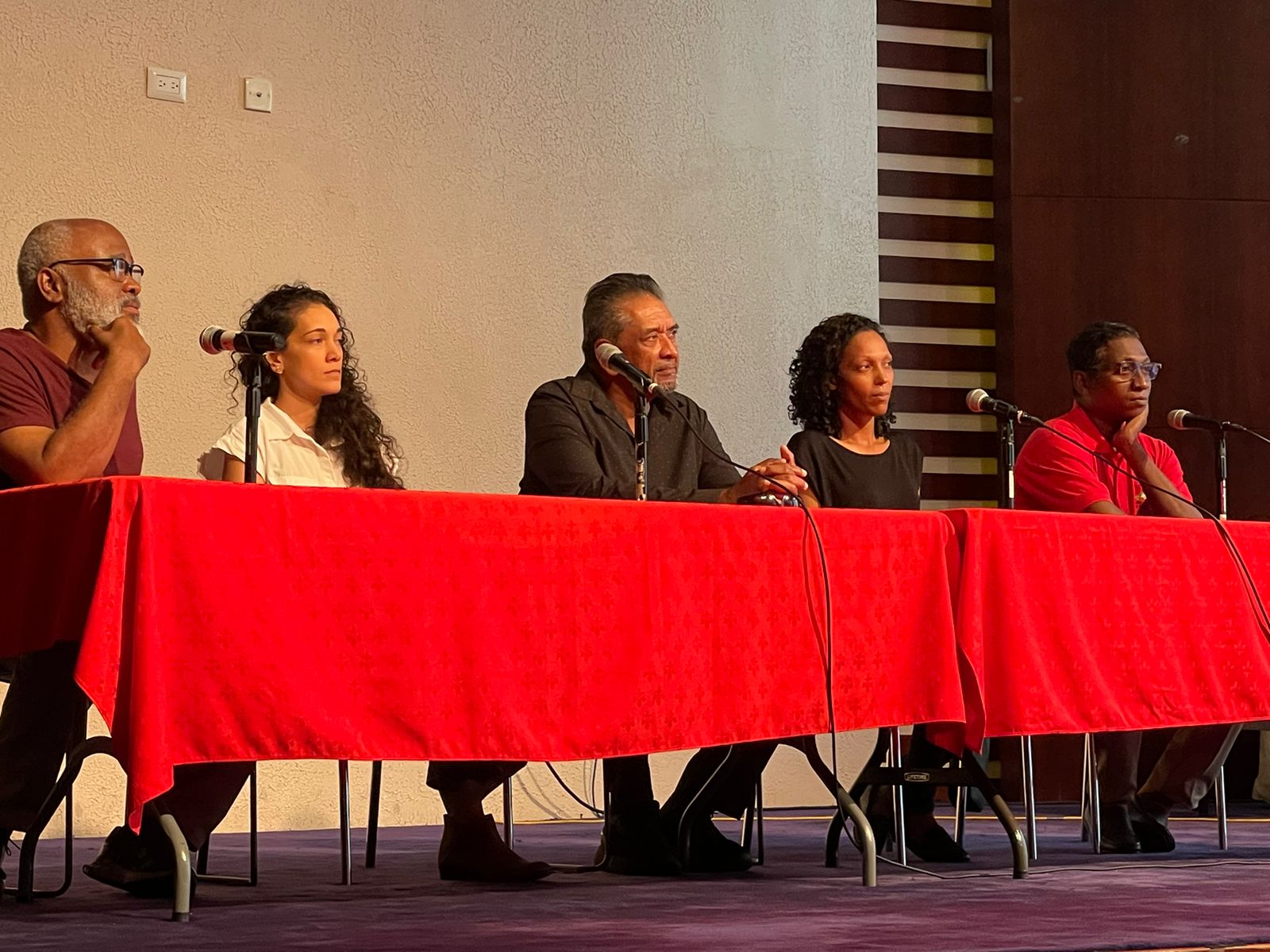Caribbean Theater part 3: Burning Questions in the Arts

The Caribbean boasts a deep cultural heritage and a vibrant artistic community, yet its theater landscape faces significant challenges. From funding shortfalls to the integration of technology, the region’s creatives navigate complex hurdles while striving to preserve the unique spirit of their craft. These pressing concerns were dissected at a panel discussion hosted by the University of Trinidad and Tobago’s Academy for the Performing Arts (APA). With insights from theater professionals and educators, the event explored the burning questions shaping the future of Caribbean theater.
The Panel
Moderated by Michael Cherry, an award-winning actor and professor, the discussion featured:
Safa Niamat-Ali: Vice President of the National Drama Association of Trinidad and Tobago and Director of the New Play Festival.
Marvin Ishmael: Director of the National Theater Arts Company of Trinidad and Tobago.
Arnold “Pinny” Goindhan: Founding member of RAPSO group Black Lyrix, actor, and director.
Megan Gill (me): Creative consultant, content producer, and technical theater professional.
With a dynamic audience of theater professionals, the dialogue covered themes of technology, audience engagement, and funding for the arts.

Technology and Storytelling: The Balancing Act
The conversation opened with Cherry’s question:
How do we as theater artists plan on using technology in our creative processes?
Marvin Ishmael expressed respect for technology but stressed the importance of storytelling:
“Good theater comes back to storytelling, which allows words to create images in your mind”.
I then offered a contrasting perspective, embracing immersive technologies like projection mapping:
“Tech works best when you don’t notice it. It should enhance the story, not overpower it”.
The panel discussed the tension between honoring tradition and integrating modern tools. Audience members voiced concerns about the impact of AI and technology on theater jobs and creativity. Safa Niamat-Ali dismissed fears that AI could replace playwrights, noting:
“AI lacks the nuance and depth of human storytelling. It can’t capture the complexity between stimulus and reaction”.
Arnold Goindhan highlighted a need for balance:
“If tech is the only memorable thing from a performance, it has failed. It must serve the story” .
Funding Gaps and Resource Allocation
Securing financial support emerged as a critical issue. Ishmael outlined the reality:
“We’re operating in a space where we do not get enough financial support”.
He advocated for government and corporate investment, referencing successful tax breaks for arts funding in other nations. Niamat-Ali emphasized that limited resources restrict artistic choices:
“Incorporating more technology increases costs. We already struggle to fund basic productions”.
She urged for community-based solutions, highlighting the role of educational institutions in bridging gaps.
The discussion also touched on infrastructure deficits. Niamat-Ali noted:
“We don’t even have a trapdoor in our theaters—something used since the origins of theater”.
Audience Engagement: Building the Next Generation of Theater Lovers
Cherry steered the conversation to the question: How can Caribbean theater attract younger audiences? I then emphasized the need for innovation:
“We must meet younger audiences where they are, incorporating interactive technology and digital marketing to make theater relevant”.
Niamat-Ali stressed the importance of early exposure:
“Many people don’t realize how amazing theater is until they experience it. Schools can play a pivotal role”.
Panelists agreed that storytelling and live performance hold unmatched power, but marketing strategies must evolve to resonate with modern audiences.
The Role of Collaboration
The panelists highlighted collaboration as a cornerstone for progress. I noted that partnerships across industries, including tourism and digital marketing, could amplify theater’s reach:
“Trinidad and Tobago is inherently theatrical—from Carnival to calypso. We need to connect these dots to elevate theater”.
Niamat-Ali emphasized community-driven approaches:
“Theater practitioners must be at the center of conversations, with educational institutions and venues listening to us”.
The discussion also touched on the need for mentorship programs to nurture emerging talent, ensuring the sustainability of the Caribbean theater ecosystem.
A Call to Action
The panel shed light on the challenges and opportunities within Caribbean theater. While funding deficits and infrastructure gaps persist, there is hope for transformation through innovation, education, and collaboration. As Niamat-Ali aptly stated:
“Live performances have a unique energy that no technology can replicate. We just need to show audiences the magic”.
By addressing these burning questions and implementing actionable solutions, Caribbean theater can thrive, preserving its cultural identity while adapting to a rapidly changing world. With the collective effort of practitioners, policymakers, and audiences, the region’s theater community can inspire future generations to carry its legacy forward.
All photos provided by Megan Gill
Editor's Note: At StageLync, an international platform for the performing arts, we celebrate the diversity of our writers' backgrounds. We recognize and support their choice to use either American or British English in their articles, respecting their individual preferences and origins. This policy allows us to embrace a wide range of linguistic expressions, enriching our content and reflecting the global nature of our community.
🎧 Join us on the StageLync Podcast for inspiring stories from the world of performing arts! Tune in to hear from the creative minds who bring magic to life, both onstage and behind the scenes. 🎙️ 👉 Listen now!

